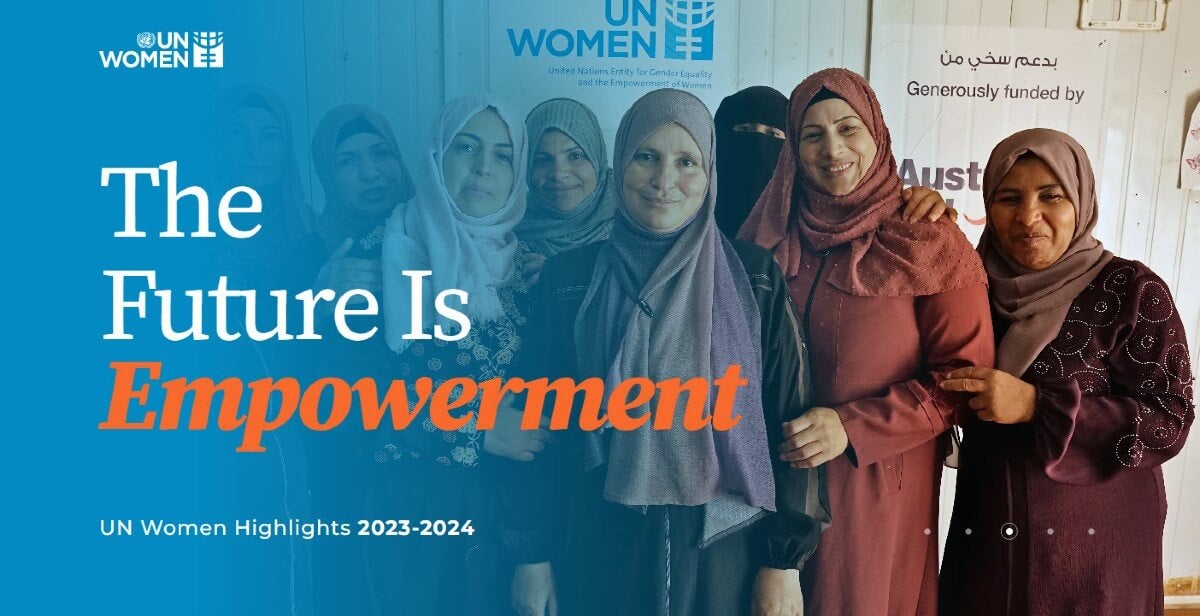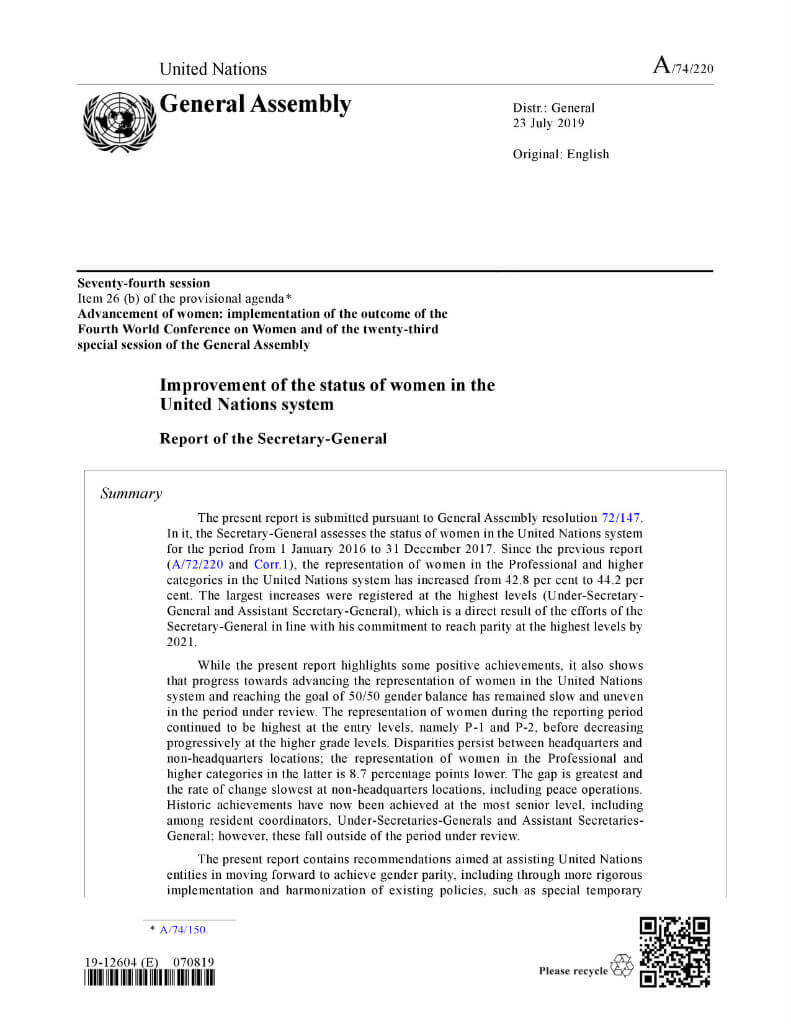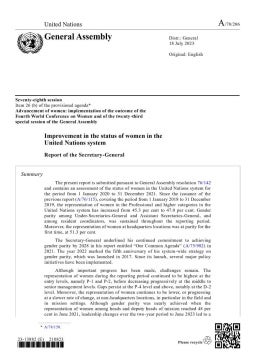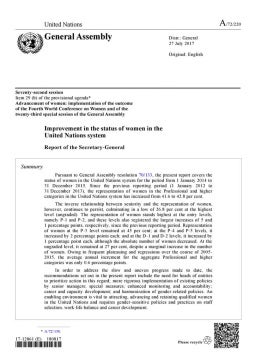Improvement in the status of women in the United Nations system: Report of the Secretary-General (2019)
The present report (A/74/220) is submitted pursuant to General Assembly resolution 72/147. In it, the Secretary-General assesses the status of women in the United Nations system for the period from 1 January 2016 to 31 December 2017. Since the previous report (A/72/220 and Corr.1), the representation of women in the Professional and higher categories in the United Nations system has increased from 42.8 per cent to 44.2 per cent. The largest increases were registered at the highest levels (Under-Secretary-General and Assistant Secretary-General), which is a direct result of the efforts of the Secretary-General in line with his commitment to reach parity at the highest levels by 2021.
While the present report highlights some positive achievements, it also shows that progress towards advancing the representation of women in the United Nations system and reaching the goal of 50/50 gender balance has remained slow and uneven in the period under review. The representation of women during the reporting period continued to be highest at the entry levels, namely P-1 and P-2, before decreasing progressively at the higher grade levels. Disparities persist between headquarters and non-headquarters locations; the representation of women in the Professional and higher categories in the latter is 8.7 percentage points lower. The gap is greatest and the rate of change slowest at non-headquarters locations, including peace operations. Historic achievements have now been achieved at the most senior level, including among resident coordinators, Under-Secretaries-General and Assistant Secretaries-General; however, these fall outside of the period under review.
The present report contains recommendations aimed at assisting United Nations entities in moving forward to achieve gender parity, including through more rigorous implementation and harmonization of existing policies, such as special temporary measures, strengthened accountability mechanisms and enhancement of career development. The creation of an enabling environment remains vital in supporting the goal of 50/50 gender balance by fostering an inclusive workplace that attracts, retains and advances women and supports all staff in balancing the obligations of home and professional life.










